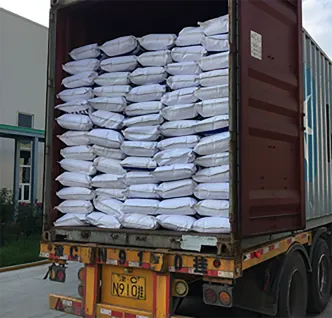
พ.ย. . 11, 2024 18:48 Back to list
uses of hydroxypropyl methylcellulose
Uses of Hydroxypropyl Methylcellulose A Versatile Ingredient in Various Industries
Hydroxypropyl methylcellulose (HPMC) is a non-ionic, water-soluble polymer derived from cellulose, a natural carbohydrate found in the cell walls of plants. Its unique properties make it an essential ingredient across a wide range of industries, including pharmaceuticals, food production, cosmetics, and construction. This article delves into the multifaceted uses of HPMC, highlighting its significance and advantages in various applications.
1. Pharmaceutical Applications
One of the most prominent uses of HPMC is in the pharmaceutical industry. It serves as a binder and film-forming agent in tablet formulations, helping to improve the mechanical strength of the tablets while also providing controlled release of active ingredients. HPMC's ability to form gels and its excellent swelling properties make it an ideal candidate for creating matrix systems. These systems allow for the sustained release of medications, enhancing therapeutic efficacy, and improving patient compliance by reducing the frequency of dosages.
In addition to its role in oral dosage forms, HPMC is also used in ophthalmic solutions and contact lens formulations, serving as a viscosity-increasing agent. Its ability to retain moisture makes it beneficial for eye care products, helping to alleviate dryness and provide comfort.
2. Food Industry Applications
In the food sector, HPMC is utilized as a food additive and emulsifier. It acts as a thickening and stabilizing agent, enhancing the texture and consistency of various products. For example, it is commonly used in gluten-free baking to improve dough viscosity and elasticity, providing a desirable texture in baked goods. HPMC is also found in sauces, dressings, and ice creams, where it contributes to a smooth mouthfeel and prevents ingredient separation.
Moreover, HPMC is recognized for its role as a fat replacer. It helps reduce calorie content in low-fat and reduced-calorie food products while maintaining palatability. This makes it particularly valuable in the production of healthier food options, catering to the growing demand for nutritious food among consumers.
uses of hydroxypropyl methylcellulose

3. Cosmetic and Personal Care Products
The cosmetic industry extensively employs HPMC due to its thickening, emulsifying, and film-forming properties. It is a prominent ingredient in skincare products, such as creams, lotions, and gels, where it provides a desirable texture and enhances product stability. HPMC also contributes to the moisture retention properties of creams and serums, helping to keep the skin hydrated.
Additionally, HPMC is used in hair care formulations, such as shampoos and conditioners, where it helps to improve the viscosity and overall feel of the product. Its ability to form a film on hair strands offers protection and enhances shine, making it a popular ingredient in many personal care products.
4. Construction Industry
In construction, HPMC serves as a crucial additive in various building materials, particularly in cement and gypsum-based products. It enhances workability, adhesion, and water retention, allowing for smoother application and improved performance of mortars and plasters. HPMC helps to prevent cracking and shrinkage in finished surfaces, contributing to the durability of construction projects.
Moreover, HPMC is used in tile adhesives, where it improves open time, providing more flexibility for installation. Its ability to retain water aids in the curing process, ensuring better bonding of tiles to surfaces.
Conclusion
Hydroxypropyl methylcellulose is a versatile ingredient with a wide array of applications across multiple industries. Its unique properties, including water solubility, thickening, and film-forming capabilities, make it an invaluable component in pharmaceuticals, food production, cosmetics, and construction. As industries continue to innovate and seek sustainable solutions, the importance of HPMC is likely to grow, reinforcing its status as a crucial ingredient in modern formulations. With ongoing research and development, the potential uses of HPMC may expand even further, catering to diverse consumer needs and preferences in the future.
-
The Widespread Application of Redispersible Powder in Construction and Building Materials
NewsMay.16,2025
-
The Widespread Application of Hpmc in the Detergent Industry
NewsMay.16,2025
-
The Main Applications of Hydroxyethyl Cellulose in Paints and Coatings
NewsMay.16,2025
-
Mortar Bonding Agent: the Key to Enhancing the Adhesion Between New and Old Mortar Layers and Between Mortar and Different Substrates
NewsMay.16,2025
-
HPMC: Application as a thickener and excipient
NewsMay.16,2025
-
Hec Cellulose Cellulose: Multi functional dispersants and high-efficiency thickeners
NewsMay.16,2025







